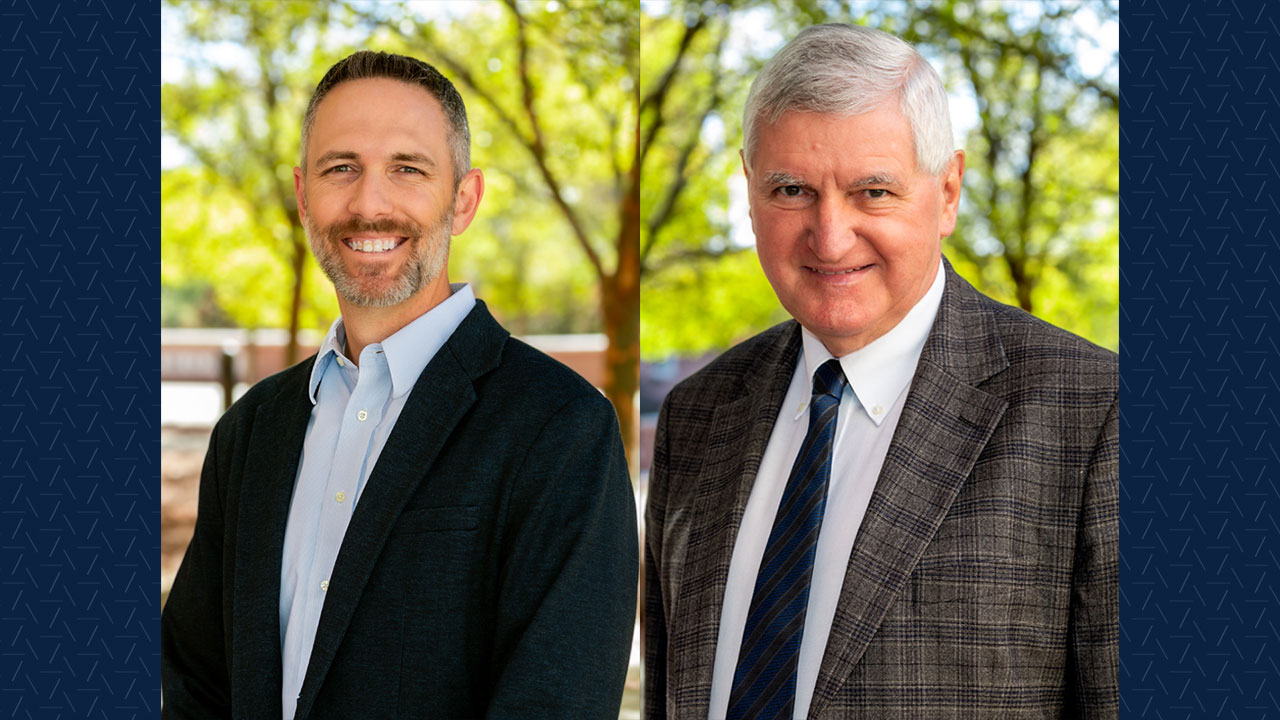The Expert Answers Q&As and columns reflect the expertise and opinions of individual faculty members and do not necessarily represent an official policy or position of the university.
content body

Pictured, from left, are Matt Yarnold, associate professor and director of Auburn’s Advanced Structural Engineering Laboratory, and Andrzej S. Nowak, professor and Elton & Lois G. Huff Eminent Scholar Chair of Auburn’s Department of Civil Engineering.
The catastrophic collapse of the Francis Scott Key Bridge in Baltimore this morning is causing many to wonder how such an incident could occur. Andrzej S. Nowak, professor and Elton & Lois G. Huff Eminent Scholar Chair of Auburn’s Department of Civil Engineering, and Matt Yarnold, associate professor and director of Auburn’s Advanced Structural Engineering Laboratory, provide answers to some pressing questions following the incident, noting how the Baltimore bridge had limited redundancies and is similar to other past bridge collapses.
The professors detail below how today greater protections against such collapses are included in bridge designs, and they also discuss how Auburn is at the forefront of such efforts:
How could the failure of one bridge support due to a cargo ship strike cause the bridge’s entire collapse?
Nowak: This bridge had a very limited redundancy. There were other catastrophic failures caused by just one weak element (Tampa, Florida and Minneapolis are examples)
Yarnold: The bridge supports (piers) are essential to transfer the load from the superstructure to the foundations. Removing a major support like this creates instability, which results in complete collapse.
What type of design is that of the Francis Scott Key Bridge, and is there a better design for newer bridges these days?
Nowak: Cantilever truss. Today, we protect the supports with what is called “dolphins” that serve as bumpers.
Yarnold: This structure is a steel continuous through truss bridge. It is an efficient design in terms of material (common many years ago). Currently, we don’t build bridges in this structural form. The replacement bridge will likely be a cable-stayed or arch bridge.
Is this collapse similar to any other in recent history, and what can be learned from this case and any others from the past?
Nowak: Yes, Tampa, Minneapolis, others.
Yarnold: Yes, the Sunshine Skyway Bridge in Tampa was a similar collapse due to a ship impact. While bridge failures are tragic, a lot of knowledge can be gained. The bridge field has been heavily influenced by prior bridge collapses (e.g., the inspection program, design methods, and construction practices).
For steel bridges such as the one in Baltimore, how frequently should they be inspected, and what do inspectors typically look for in terms of structural strength/integrity?
Nowak: This collapse could not be prevented by inspection. It would need protective “barriers” that protect the pier (as in Tampa).
Yarnold: It is required by federal law that bridges be inspected on an interval of no more than two years. However, this collapse wasn’t due to inspection.
How susceptible are our nation’s steel bridges to something like this?
Nowak: Some older structures, about 10% of our bridges, are inadequate to carry traffic load.
Yarnold: I don’t consider this a steel bridge issue. It is more of an issue with adequate protective structures around bridge supports and procedures in place by the shipping industry to prevent bridge strikes.
How is Auburn helping address better bridge structures for the nation?
Nowak: We teach students how to design and avoid problems and reduce the risk of failure.
Yarnold: At Auburn, we teach a Bridge Design course so students can learn everything from the basic fundamentals to the practical tools for designing and managing our valuable infrastructure. We are also very active in a number of bridge research projects at the state and federal levels.
Can you tell us about Auburn’s Advanced Structural Engineering Lab and some of the research projects it is currently involved in to address stronger bridge structures?
Yarnold: We have a number of projects at ASEL. One project led by Dr. Sener aims at strengthening existing reinforced concrete bridges using titanium reinforcement. A project I have aims to improve bridge deck slabs across the state of Alabama. Another one of my projects is studying steel bridge bracing. Dr. Nowak has recently had a few federal bridge projects.
What is the biggest problem engineers face when it comes to bridge construction, and what should be done to address that issue?
Nowak: Bridges, especially big bridges, are very expensive to build and to maintain, but they require attention.
Yarnold: Bridge construction is very challenging due to the complexity of large-scale structures. We need to adequately train engineers so they can meet these challenges.




